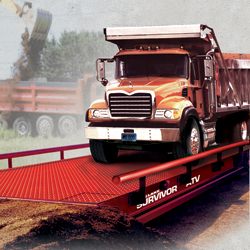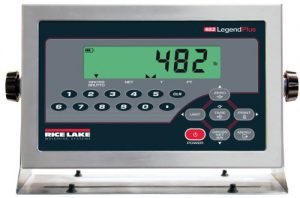We’re going to try & help you understand all the truck scale terminology that you need to know. Especially if you’re new to truck scales.
So let’s say your business has decided to purchase a truck scale in order to determine accurate and reliable vehicle weight for your application. That’s great! Understanding fundamental truck scale basics and how a truck scale works will help you know which questions to ask your local scale distributor to ensure you purchase the truck scale style that fits your needs with the options and accessories that can enhance your application.
Whether monitoring a vehicle’s weight for safety guidelines or to complete business transactions, you should know what the info determined by a truck scale means to your business.
For example:
Gross weight is the total weight of the vehicle and loaded product.
Tare weight is the weight of only the vehicle.
Net weight is the weight of only the loaded product.

Today, most scales at solid waste facilities or recycling centers are installed with above ground or concrete pit foundations. Depending on state or regional requirements, scales can also be installed in a shallow pit, as opposed to the deep pit required by older mechanical scales. A pit installation requires less space than an above ground scale since longer approaches are generally required for above ground configurations. However, pit-styles require sump pumps and drains, and are generally more vulnerable to corrosion due to potential standing water.
The truck scale’s driving surface is called the weighbridge. Weighbridges are composed of steel or concrete decks, and are typically manufactured in modular designs that are connected together during installation.

The indicator, also called a controller, or terminal, can display basic weight functions, as well as serve as the command center for a weighing system with truck in & out programs to control the entire truck scale system, including any remote displays and ticket printers.
Load cells are vital to truck scale performance. There are various types of load cells, but they all basically have the same function—to accurately measure weight on the scale. How do load cells work, you may be asking? All load cells take an analog measurement, and then that signal is converted to a digital output either at the load cell, junction box, or in the scale indicator. Load cells are typically constructed of steel and are integrated within the weighbridge, usually at the corners of each module.
A junction box properly manages multiple load cells. By matching the signal of each load cell and summing them into a signal that’s sent to the indicator, junction boxes equalize the system for accurate and reliable weight readouts.
Handwriting a ticket for each weighment is time consuming and tedious, and also leaves room for human error. Ticketing kiosks, scale data management software, and/or ticket printers eliminate those problems. Most states also require ticket printers and Remote Displays.
We’re going to wrap up our entry on truck scale basics and terminology. I hope we made all this truck scale jargon a little easier to understand for those of you in the market for a truck scale. If you need some truck scale buying advice or scale recommendations, we are just a phone call or email away.
